|
It is now one year since This Sacred Isle was first published, and how those twelve months have flown by! To celebrate this first year, I am holding an exclusive Smashwords offer - where you can pay what you like for the ebook version of the book! Yes, that's right, pay what you like - even nothing! Offer ends on 1st November 2017, so if you fancy reading an epic fantasy adventure set in Dark Age Britain, featuring warriors, dragons and the return of Merlin, then go straight to the link below and begin the quest. . .
https://www.smashwords.com/books/view/662994
1 Comment
Writing This Sacred Isle required a huge amount of research about Britain in the Sixth Century – from everyday elements such as food, clothes and weapons, to more abstract details such as mythology, social structure and religion. I needed to study Anglo-Saxon and Celtic cultures, as well as considering the marks left on the landscape and society by Roman rule. To carry out this research I visited key sites of interest such as West Stow and Sutton Hoo, as well as a host of museums, for example the British Museum and the Fitzwilliam Museum. Of course, the internet was also helpful in checking some specific points. However, in terms of research, nothing was more important, valuable or inspiring as the time I spent researching in my local library. It helped bring home to me why libraries matter to me, and why I believe they matter to the whole community. We live in a time when (certainly in the UK) many libraries are under threat of closure. They are an easy target when it comes to local authority budget cuts and many argue that they are just an anachronism, meaningless in today’s digital world, superseded by the benefits of the internet. I believe this is a mistake, and if we lose libraries, it will be to the great detriment of our community and cultural life.
At every stage of my life, I have received help from a library: exams, job interviews etc. And when it comes to book research, I have found my local library invaluable. Put simply, I could not have written any of my books (The Tree of Life trilogy also required considerable resource) without the use of a library. I could not have afforded to buy all the books I needed to consult for This Sacred Isle – this would have left gaps in my research and cut off vital sources of inspiration. However, thanks to my local library, I was able to spend hours poring over works such as the Anglo Saxon Chronicle and, Early Anglo-Saxon Burial sites and Blackwell’s encyclopaedia of Anglo-Saxon England. I found wonderful books about Pictish history, about Celtic mythology, and about the physical landscape of East Anglia, the setting for my story. Libraries give you that freedom: they allow you to experiment with your reading, try different things, investigate – it doesn’t cost you any money. It gives anyone a chance to learn, to discover, and to create. You can find your own path, rather than being guided by corporate motives. Many times I have stumbled across books within the library, books that have given me fresh inspiration and impetus. I remember whilst writing The Tree of Life trilogy finding an old, tattered book based on a medieval bestiary – the fantastical creatures and lurid tales I encountered within sparked off many ideas that helped me develop my plot. Such happy accidents can happen via internet research, but to me they’d be less organic, less meaningful. A good library gives you a quiet (sometime silent) place to think, an antidote to the immediacy and noise of much of our society. It is a neutral space; you are not being sold a product or service. I found an hour in a reference library really gets the creative juices going, and I wonder if it’s a combination of being in a contemplative place, with other people around (connecting me to the rhythm of society) and being surrounded by centuries of learning collected in hundreds, thousands of books. In my view research within a library moves an author away from a world of soundbites and disposable, wafer thin knowledge. Don’t mistake me – the internet is a wonderful tool, a gift for authors and our lives would be far more difficult without it. But on screen you are under the constant threat of disruption or interruption, be it emails, security updates, or the burning, nagging need to update twitter or clicking on YouTube to watch the latest trailer for a new movie (guilty as charged on this one). I like to think libraries are often full of people hoping, dreaming. How many of them have found knowledge, inspiration, entertainment or even solace within their local library? How many people, otherwise isolated, otherwise cut off from other people and a cultural life, can find some measure of fulfilment within the library? Yes, budgets are always tight and yes there are many worthy services that require investment, but I believe libraries are much more than just a place where people loan books; I believe they are a crucial part of our communities. Within the county I live in, I have seen libraries become hubs for local charities, social enterprises, and even start-up businesses, giving people a chance to connect, to learn new skills, to find new career paths. Authors, readers, indeed anyone who believes in the importance of community and culture should stand up for libraries - signing petitions, supporting online campaigns, fundraising etc. Libraries can change of course, must change sometimes, but I would argue it is essential they are preserved. A place of learning, a place to think, a refuge – the library are all these and much more. Let us not lose this gift of civilisation – our communities and our lives will be the poorer if we do. Why are libraries important to you? Add a comment and join the conversation.
For the rest of January 2017, there is 25% off This Sacred Isle ebook at Smashwords. Enter the Dark Ages and discover a land of warriors, ancient magic and dragons! Click below to find out more and purchase your copy.
When publishing their ebooks, indie authors face a choice – to KDP Select, or not to KDP Select. It is clear that KDP Select offers many benefits to authors, such as earning when customers read your books from Kindle Unlimited and the Kindle Owners’ Lending Library, and using promotional tools such as Kindle Countdown Deals and Free Book Promotion. However, there is a drawback. When you enroll your book in KDP Select, you are committing to making the digital version available exclusively through KDP - you cannot distribute your book digitally anywhere else, including on your own website or blog. And I admit, when I came to publish This Sacred Isle and republish my Tree of Life series, the idea of exclusivity concerned me. I understood the many advantages of KDP Select, but felt that restricting my books to just one distributor rather went against the concept of being an ‘independent’ author and publisher. Therefore, although I published Kindle versions of my book through KDP, I opted out of KDP Select, and decided to use Smashwords. Smashwords is an ebook distributor – once you have uploaded your book it is soon available via multiple retailers (for example iBooks, Barnes and Noble, Kobo). This means you can manage your book centrally rather than co-ordinating across numerous platforms. For royalties, you receive 60% of the list price for units sold through the major ebook retailers and up to 80% of list price for ebooks sold through the Smashwords store. Smashwords – the publishing process In general terms, publishing with Smashwords has similarities with KDP. You upload your interior and cover file etc., but be warned that the Smashwords ‘Meatgrinder’ (their automated file conversion technology) is well named: it shows no mercy to any file that does not meet its requirements. I spent many frustrating hours preparing files for submission, only for them to be repeatedly rejected – a painful experience. But (and this is confession time), once I read the Smashwords Style Guide (and I mean really read it, rather than just skim reading) then the steps to take were obvious, if still long-winded. Yes, it’s dull to read a manual, but if you are prepping a file for Smashwords, the Smashwords Style Guide is essential. Why are the formatting requirements for Smashwords so demanding, especially in comparison to KDP? Well, unlike KDP, Smashwords converts your file into a number of different formats, so any odd or complicated formatting will cause problems. I eventually went for the ‘nuclear’ option, i.e. stripping all formatting and then rebuilding my file according to the specifications set in the Smashwords Style Guide. Once I did this, the file was accepted and the process worked well. So, to repeat – don’t make my mistake, read and follow the Smashwords Style Guide! Pricing / distribution
Once your book is approved (and you’ve done a little jig of celebration and relief) you can set the price / distribution etc., which I found to be a straightforward process with clear onscreen instructions. There is plenty of advice on pricing within the Smashwords FAQ page, and I think that would cover in some detail any query you might have. One key point is that if you want to make your book free you can – no fuss, no problem, and as you can amend pricing at any time (note that Apple usually updates same-day, other retailers are generally 2-3 business days), this is something authors might want to consider if, for example, they want to offer the first book in a series as perma-free. Distribution is handled through the Smashwords Channel Manager - it takes up to five days for books to appear across the main external retailers (your book will appear in the Smashwords store within minutes of publishing). Smashwords allows you to set a publication date (along with pre-order distribution), and as long as this is done sufficiently in advance, this will be applied both to their store and the external retailers. I found this part of the distribution worked very efficiently and I encountered no problems. Tools and other support One of the beauties of Smashwords is that you only have to update your book’s details (or metadata, if you’re talking tech-speak) in one place and the updates are then cascaded to the other retailers. This does save time and I feel gives the author an impressive level of control. Smashwords offer a range of additional features to support authors. For example, Smashwords Coupon Manager (as the name suggests) allows an author to generate custom coupon codes for readers, reviewers etc. I haven’t used this feature yet but I am planning to experiment with it – you should note that the coupons can only be used at the Smashwords store. Another interesting feature is Smashwords Interviews, through which you can create and publish a Q&A-style interview – you can select from a range of standard questions or add your own. The interview becomes part of your author profile on Smashwords and acts as a decent introduction to your work. Does it drive sales dramatically? No, but it’s a fun, easy-to-use and free feature. For reference, you can view my interview here. Sales reporting is handled through the Daily Sales Reporting feature, which gives daily reporting from iBooks, Barnes & Noble, Kobo, OverDrive and the Smashwords store. Generally I find the reporting a good element of Smashwords, with simple charts and other analytics to help you understand how sales are progressing. Conclusion Despite the challenges of formatting an interior file for Smashwords, I am glad I opted to use Smashwords. Is it for everyone? I think that depends purely on your view of KDP Select. If you’re happy with KDP Select, then by all means follow that route. But if you want to avoid exclusivity, then I suggest you seriously consider Smashwords. Set aside a weekend to format your book – you might need it – but it’ll be good use of your time. I like Smashwords and hope it will continue to develop. I believe it has a lot to offer indie authors – don’t be afraid to give it a try! Have you used Smashwords? Does it work for you? Add a comment and join the conversation. In the final post chronicling the writing of This Sacred Isle, I'll be discussing my thoughts about the finished novel. And to mark the end of this series, and for a limited time only, the ebook version of This Sacred Isle is available at half price! Click here to purchase. Coming to the end of a book is, for me, a time of mixed emotions - satisfaction, even a little pride at having completed the task, alongside regrets about some aspects of the novel.
Writing a novel is a long process, with twists and turns, reflecting in many ways the progress of a plot. And I am always fascinated how different the final version differs from the concept I formed in my 'mind's eye' at the very beginning. Images, symbols, beats - abandoned, lost from the finished book. During this process there are bound to be setbacks and regrets - in this post I highlight one of each (trust me, there were more...), the effect they had, and what I learned from them. Oh, and to end on a positive note, I'll talk about what I feel worked best within the novel. A setback: Although clearly the story is a work of fiction, I have tried to use real world settings for many of the key locations. Initially I placed the king’s stronghold of the Cyneholf beside the River Deben (called the King’s River in the book). On the west bank of the Deben is an area called Kingston (‘King’s town’ in Old English), which seemed a reasonable location for King Tytila’s stronghold. And frankly, from a storytelling perspective, it was easier, as I didn’t have to contrive a way of getting the characters across the river! However, in 2014, Archaeologists announced findings that supported the idea that the royal settlement of the Anglo-Saxon kings of East Anglia was located at Rendlesham, a village several miles to the north-east of River Deben. This was a fascinating and exciting moment in our understanding of the period, but it was rather inconvenient in terms of my story… At this point, my options were to ignore this discovery or to rewrite part of the story to relocate the Cyneholf close to the historical origins of the East Anglian kings. After some consideration, I realised I had to change the story – I could not ignore this development. Although this did entail some significant rework (and took more precious time, slowing my progress) it actually opened a new aspect to the story. I added a cameo from a character called the Boatman, a Charon-like figure who takes Morcar and his companions across the King’s River and into the area we now call Sutton Hoo, the burial lands of the Anglo-Saxon kings, a literal ‘land of the dead.’ So now, rather than actually being a setback, I feel the addition of a scene crossing river becomes a symbolic moment in Morcar’s journey, one where his world truly begins to expand, and the danger he faces increases. He moves from the quiet, contained world he has always known into the bustling heart of a kingdom, with all the machinations of a Royal court. And there his adventure truly begins... So, I would say expect setbacks when writing your story - they are inevitable. But don't despair; they might knock you off course for a short time, but there's always a chance you'll discover a better path! A regret: I feel This Sacred Isle has strong female characters. Slug (as she's introduced...) is courageous, intelligent and confident. With the greatest respect, I did not want her to stray into Xena - Warrior Princess territory. She's not a superhero and she's not just a tough fighter - just someone who has endured much in her brief life and refuses to submit meekly to slavery and tyranny. And for all her suffering, she does not allow her (understandable) antipathy towards Anglo-Saxons to poison her sense of justice. Queen Eawyn is the power behind the throne of the East Angles but not in a malevolent way. She's no Lady Macbeth. I wanted to express the sense of frustration of this intelligent, shrewd woman who is constrained by the structures of her society. Eawyn is effectively forced to serve a king who, although fierce and skilled in battle, lacks her intellect, foresight and humanity. Open defiance to her husband would be dangerous - could you imagine King Tytila's reaction if he felt scolded, hen-pecked by his wife? Eawyn must seek to guide her husband's actions and decisions, to cool his warlike temperament, while all the time making him think he is in full control. A delicate balancing act! Thinking about these characters brings me to my main regret. I wish I had had more scenes of them together - I should have done this, but again, like many ideas, many plans, this somehow got lost in the mix. It concerns me that I failed to concentrate enough on female characters. Yes, the Anglo-Saxon world was patriarchal but could I have expanded the role of women in the tale? Did I fail the Bechdel test? Hmm, possibly. Although this is a test and not a law, it serves a clear and important purpose: it prompts all writers to think about gender bias in their work. I know I need to learn from this; I know I need to do better. A success: Looking back over the novel I can always find elements that didn't quite achieve what I was hoping for, elements that if I did it all again, I would change. I am sure every writer who has ever lived has felt the same. Writing This Sacred Isle has taught me a lot about the craft and I feel I have more weapons in my literary armoury than before I started. I hope to take and develop these skills in my next novel, and all future novels beyond! I want to keep learning, keep developing... So which part of This Sacred Isle am I most proud? My intention with the story was always to blend hard historical veracity with the mythical elements of the pagan Anglo Saxon belief system, and I think I achieved this. Through extensive (and sometimes exhausting!) research, I was able to gather the key information to build a credible picture of this period of history. And when mixed with mythical elements such as Thyrs, Barghests and dragons, I believe it creates a compelling setting for the tale. But I think the part of This Sacred Isle of which I am most proud is the creation of the character of Morcar. I wanted more than just a boy who learns to become a warrior and a man, the usual a 'king-in-waiting' archetype. I wanted Morcar to feel alienated by his society, to resent and even resist what is expected of him. For me, showing Morcar's psychological turmoil, his fears, his insecurities, was crucial both to his development as a character and to the plot itself. I am pleased to see Morcar appear as a fully fledged character with, I hope, real depth - and I hope he is someone readers can identify with too. This is the last of my 'Writing This Sacred Isle' series of posts and I hope you have found them interesting and informative. However, I will of course continue to blog regularly about a range of writing and publishing subjects. And I will post regular updates as my next novel begins to take shape... How do you deal with the inevitable setbacks that come with writing a book? What have you learned? Post a comment - join the conversation! In this latest post chronicling the writing of This Sacred Isle, I'll be looking at some of the key influences in the creation of the novel. No author writes in a vacuum. Every book, film, work of art and piece of music we experience influences our creativity. In this post I want to explore some of the works, from various mediums, that have influenced the writing of This Sacred Isle - and quite an eclectic bunch it is too! The Lord of the Rings - J.R.R. Tolkien My first glimpse, my first awareness, of Tolkien's work was watching Ralph Bakshi's ill-fated animated version of The Lord of the Rings. Although flawed, Bakshi's film opened a new imaginative world to me - and when I finally read the books it was with an intensity I've rarely read since. The scale and depth of The Lord of the Rings was overwhelming: the myriad characters, races, lands and mythology. There was endless detail to consider, to get lost in, and without question, this was the work that first planted the idea within me that I wanted to write. The way the story was rooted in the landscape has influenced me endlessly, and echoed throughout my writing of This Sacred Isle (though I would never claim to have anywhere near matched Tolkien's level of skill and achievement). Despite the fantasy elements (monsters, wizards and magic), Middle-Earth feels real, as do the physical ordeals of the characters - Frodo and Sam for example suffer exhaustion, hunger and thirst, they do not travel through an idealised fantasy realm. The harsh rules of nature still apply in Middle-Earth, and these serve to underpin and heighten the more fantastical parts of the story. Although I re-read The Lord of the Rings several times during childhood and early adulthood, I haven't read it again for fifteen years, perhaps more. Does it still have a hold on me? Yes, without question, it is a key creative touchstone in my life. I do not consider it a perfect book, nor should Tolkien be read to the exclusion of the wider pantheon of literature. But it irritates me that Tolkien is often considered reactionary and cosy - his life experiences, for example being orphaned, serving in the trenches during WW1, do not sound cosy to me and his suffering is echoed within the story. I'd argue The Lord of the Rings, taken on its own merits, is a bold work of literature and those who ignore or decry it do so at their own loss. Robin of Sherwood (TV series) This show, first broadcast on UK television between 1984 - 86, dug itself deep into my childhood (and later adult!) imagination. A bold reimagining of the Robin Hood legend, it was unlike anything I had seen before and left a lasting impression. Having seen it again more recently on DVD, I found it no less powerful. Yes, there are some clunky moments and some frankly alarming 80s hairstyles but what captured me was the powerful mix of mythical elements (e.g. Herne the Hunter, the Swords of Wayland) with a gritty medieval world, a world with truly 'dirt under the fingernails.' This was definitely the balance I tried to achieve with This Sacred Isle. There is magic and heroism aplenty with Robin of Sherwood, but there is also poverty, suffering and injustice. And I contend that the series reflects the time in which it was created: could not the sneering, venal, cruel Sheriff of Nottingham (played with glorious relish by Nickolas Grace) and the snobbish, cunning Sir Guy of Gisburne (Robert Addie) be drawn from the ranks of the 80s Conservative elite? In the same way, I believe elements of the real world influenced me, unconsciously or otherwise, when writing This Sacred Isle, and my own concerns around the dangers of nationalism and xenophobia, and of the warped misuse of history by demagogues, shaped the themes of the novel. It is not my intention as an author to force my political opinions on anyone, but This Sacred Isle appeared in a world buffeted by war in the Middle East, Brexit, the refugee crisis and a brutally divisive US election campaign, and I think it's inevitable that (in its own small way) my book will echo aspects of these anxieties, just as Robin of Sherwood did in its own time. Robin of Sherwood still has a loyal following and once experienced, this daring series will leave a mark - nothing's forgotten, nothing's ever forgotten... Pan's Labyrinth (Film) From the moment I first saw Guillermo del Toro's masterpiece, it has influenced my writing. Set in post civil-war Spain, it is a fairy tale, brutally told. The fantastical elements never detract from the real world setting, in fact they enhance it, by bringing new textures and levels of understanding: the cruelty of the fascist Captain Vidal (Sergi Lopez), the Francoist state and a complicit Catholic Church are all embodied within the Pale Man - as horrifying an image as ever witnessed on screen. Like the powers in Francoist Spain, the Pale Man devours the young, endlessly, piteously, a nightmarish vision of madness and lust. Although monstrous, the Pale Man reflects very human evil. Ofelia (Ivana Baquero) 'triumphs' because she disobeys authority - she disrespects crude, vicious power. She is small, she is young, but Ofelia is so much stronger than the adults who threaten her. This greatly inspired me when developing the character of Morcar, for although he is often awed and frightened by the authority figures around him, he is brave enough to follow his conscience, to act contrary to what his society expects. Paul Nash (artist) I am fascinated by art and have spent many happy hours in various galleries such as the National Gallery, Tate Britain, Tate Modern, The Courtauld Gallery and Fitzwilliam Museum. Some of the paintings and sculptures I have been lucky to see have influenced imagery within This Sacred Isle, for example Three Studies for Figures at the Base of a Crucifixion by Francis Bacon, Apollo and Python by JMW Turner, An Experiment on a Bird in the Air Pump by Joseph Wright of Derby, Mammon by George Frederic Watts and The Ghost of a Flea by William Blake. And there are many, many more. But one artist, perhaps above all, has inspired my writing and development as an author, and that is Paul Nash. Nash's symbolic landscapes were always in my mind when describing the world in which This Sacred Isle takes place. I very much wanted to present the landscape as liminal, where there are forces and influences beyond what is normally visible. To use Paul Nash's far more eloquent words: "The landscapes I have in mind are not part of the unseen world in a psychic sense, nor are they part of the Unconscious. They belong to the world that lies, visibily, about us. They are unseen merely because they are not perceived." Country Life, May 1938 I wanted the landscape of This Sacred Isle to effectively be a character in its own right, and to hint at its age and that it showed traces of the human (and non-human) history it had witnessed and sustained. Paul Nash had a profound sense of landscape, with a powerful emotional attachment to certain places such as Avebury and Dymchurch, places which possessed a quality he called the genius loci. This sense of places having a 'character' or 'spirit' was something I tried to create within the novel and, I hope, both supported and shaped the story. A clear example of Nash's influence on This Sacred Isle is the scene in which Morcar meets the Stag Lord, a scene that plays out in a dreamlike, symbol-laden landscape. A quote from Paul Nash encapsulates what I was reaching for:
"The divisions we may hold between night and day - waking world and that of dream, reality and the other thing, do not hold. They are penetrable, they are porous, translucent, transparent; in a word they are not there." 'Dreams', undated typescript, Tate Archive I was recently fortunate enough to visit the Paul Nash exhibition at the Tate Britain, and I found it a moving experience to see how Nash's art developed and changed through his life, and despite many changes in style (especially incorporating aspects of Surrealism), he continued his obsession with symbolic landscapes up until his death, with his final paintings a true flowering of his artistic genius. I could never hope to come even close to matching Nash's creative achievements, but his work will remain an ongoing inspiration. And if I could finish with beautiful lines from a poem written by Nash (which I saw quoted in the Tate Britain exhibition): "O Dreaming trees, sunk in a swoon of sleep What have ye seen in these mysterious places?" Paul Nash - 1934. What has influenced your writing and creativity? Post a comment and join the conversation. In this latest post chronicling the writing of This Sacred Isle, I'll be looking at writing the first full draft of the novel. “The first draft of anything is s**t.”
Ernest Hemingway Yes, you’ve probably seen the Hemingway quote before – rather blunt, perhaps, but he is bang on the money. Do not expect perfection – or anything close – on your first draft, do not even seek perfection. Your task is to get down as much of your story as you can; there is plenty of time for revising later. Using my treatment as reference, I worked through the first draft of This Sacred Isle without stopping to polish or edit anything other than obvious spelling mistakes or typos. As motivation, I set myself a monthly word count target of 15,000 words (which roughly equates to 500 words a day). This was a stretching objective but one I was confident I could achieve, which indeed I managed to, producing the first draft of ‘This Sacred Isle’ (90,000 words) in six months. What is my writing schedule? Well, it varies but I always remember the maxim ‘never a day without a line’ – this goes to the heart of one of the most important challenges when writing a first draft: you must sustain the momentum. Like many writers, I also work full-time, so seldom enjoy the luxury of a whole day concentrating on writing. However, I do try to take advantage of any small window of opportunity for writing and this was certainly true when I was working on This Sacred Isle. For example, in my lunch-break I would spend twenty minutes in the local library jotting down ideas or doing small pieces of research. If I was then able to write in the evening, I felt I already had a head-start, and if I couldn’t, then I had at least made some progress. During a first draft you must expect to get bogged down, especially in the middle of your story. If beginnings and endings are tough, middles are for me like a lower circle of hell. Fatigue is setting in - the booster fuel of excitement at the start of the project has expired. Now you have to keep going, digging into reserves to get to the end. So, what do you do if you find yourself at this stage? My advice? Keep going. Expect this time. You don't have to enjoy it (you won't), you can even grumble about it (you will) but don't stop. Don't falter, not now. Keep going. For if you do, slowly, inexorably, the end will come into sight. And that is an energising moment. With the finishing line in view, you will find a fresh rush of creativity. Writing a novel really is a job of a thousand small steps, so don’t try to do it one leap. Be honest with yourself and set targets you can reasonably manage. Keep chipping away, keep moving forward, and you’ll finish your first draft sooner than you think. And then, you need to start thinking about rewriting... What are your experiences of writing a first draft? Which is the hardest part for you? So you’ve finished your book – you’ve read through the manuscript line by line, word by word. You’ve found and corrected every typo, your grammar is flawless…until the very first reader picks up the book and finds an error! Even the most diligent, most grammar savvy author cannot spot every mistake in his or her own manuscript. And this is why employing the services of a professional editor / proofreader is a must for your book. Helen Baggott is an accredited proofreader and copy-editor, and a partner member of ALLi (Alliance of Independent Authors). Helen offers a range of professional services including editing, proofreading and self-publishing advice. Helen has worked on all four of my novels, and I strongly endorse her services – Helen’s professionalism and attention to detail certainly improved my books.
Helen kindly agreed to an interview about the role of an editor / proofreader, and about the benefits this can bring to authors. What attracted you to working as a professional editor/proofreader, and how did you start? As the self-publishing market blossomed I recognised the need for affordable proofreading. Too many writers were publishing their books without having the content edited and proofread. I had already completed a course to complement my work on a local magazine and as a writer of articles for other magazines. Do you have a specific method you use for each book or does it change from manuscript to manuscript? By the time a manuscript is finished an author can almost recite the content, that’s how familiar it becomes. Even the way the paragraphs break on a page will be imprinted and the brain and eye will conspire to deceive. It’s unlikely friends and family will criticise or find fault with the work – employing an impartial professional is essential. Every manuscript is different – every writer is different. By the end of the first chapter I have appreciated the style and have a good sense of the author’s voice. That voice is critical – any suggested changes must retain it. Also, I will make a note of any quirky styles – just to ensure that the author’s voice is consistent. It’s surprising how often an author will change a character’s personality. If I don’t hear the character saying those words or acting that way, I flag it up and explain my query. What is the difference between editing and proofreading? Editing will ultimately ensure a manuscript is structured and rounded, that it has no plot bumps or inconsistencies. It should ensure that the reader isn’t suddenly caught unawares by an unconvincing scene. Inexperienced authors will sometimes force something on to a character to suit a scene or a plot twist. That short-changes a reader’s experience. Characters have to be fully-formed and whilst you shouldn’t reveal everything on the first page, you do need to create a credible cast. We all, in real life, occasionally act out of character. But there’s a reason, an external influence. The skill of the author will create exactly that, and the editor will ensure it all has the mark of credibility, even in incredible scenarios. Proofreading will correct typos – spelling, grammar, punctuation, etc. However, if I’m asked to proofread a manuscript and it’s clear it hasn’t been edited, I will include the relevant information in my report. Editing and proofreading will involve a certain amount of fact-checking. Whilst I don’t have access to an author’s research, I do check as many details as possible. It’s always better to query something than assume it’s correct – especially with non-fiction. What are the most common mistakes you see in manuscripts? Very often there will be inconsistencies – both with the style and the content. But I actually find mistakes in the front matter – where the author has added their own details. It’s the same with websites; the ‘About Us’ pages are usually peppered with errors. We know our own story so we barely read the text. That information is standard – it’s possibly been copied from blog, to website, to Twitter profile, to Amazon, etc. If the original version has an error it’s carried through to all platforms. What do you find most rewarding about your job? Some of my clients are established and have a number of traditionally published books to their names. Others are new to writing and as thrilling as it all is – and should be – they do need help. It’s extremely satisfying to work on a project for several months and help an author fulfil their potential and be able to publish a polished book. If you could give just one piece of advice to independent authors when it comes to editing/proofreading, what would it be? I always think it’s a terrible shame that some authors do not allow time in their self-publishing schedule for editing and proofreading. Setting a date for their book’s launch seems more important than having an error-free product. In five years’ time, postponing the launch by a month would be irrelevant. Bad reviews on Amazon (because of errors) will be there forever. Successful authors are those who take their time. They’re not procrastinating, tweaking the same sentence a hundred times, they’re sitting back and allowing the book to settle. My top tip would be: create a timetable that allows you to self-publish the best book you possibly can. Don’t compromise just because you have a date ringed on the calendar. You can find Helen at http://www.helenbaggott.co.uk/ In this latest post chronicling the writing of This Sacred Isle, I'll be looking at how I used description within the novel. I have to declare an interest – I love writing descriptive passages. Tiny, quirky details fascinate me, and for a novel such as This Sacred Isle, it was important to create a sense of a vivid, living, breathing world. I always try to use all the senses rather than simply giving a visual description of a scene; this gives a richer impression for the reader. As mentioned in the research post, where possible I like to visit locations pertinent to the story - just listening to the sounds of a location, or taking in the smells (pleasant or otherwise!) gives me a deeper connection, a deeper feeling of place. In This Sacred Isle, I wanted the landscape to almost be a character, for its moods and history to have an effect upon those who live there. For example, the following is a short passage from the book:
"They crunched over frozen dead leaves and bracken, disturbing birds feeding on the woodland floor. A red squirrel scampered up the nearest tree, startled by the unexpected intruders to its realm. Although dimmed by the cold of winter, the wood still assaulted Morcar’s senses with unfamiliar sounds, smells and sights: the rhythmic creaking of ice-stiffened branches; a jay’s screaming call; the moist, cloying smell of decomposing leaf litter. An eerie, echoing wolf-howl carried on the wind. The wood unnerved Morcar, he felt out of place, adrift in a world familiar on the surface, but with strange undercurrents." I made use of a colour palette within the story, to suggest move and subtle changes in the plot. For example, the story of This Sacred Isle begins in winter. This is very deliberate, as I wanted to suggest a world frozen in stasis – Morcar’s people are bound by their culture and a very specific worldview (as are many other characters we encounter in the book). In this part of the story I used (obviously!) a wintry palette of white, greys and browns. As the novel progresses, and Morcar’s experience broadens, we move through the seasons, which is not just a temporal sequence but is also designed to reflect movement within Morcar’s character and the effect his actions have on those around him. However, my love of descriptive writing carries an inherent risk! I have to be wary of my tendency to over-describe and drift into passages of longueur – as important as description is to the process of creating a novel, it should never slow the narrative. When editing my novel I cut most brutally any passages of description; they need to work very hard to convince me of their necessity. This sometimes means losing some sentences I favoured, but unless they served a narrative or character function, then it becomes hard to justify keeping them. It is a question of balance – the world I want to create within This Sacred Isle needs to be layered, with a ‘dirt beneath the fingernails’ realism combined with a sense of mysticism. This requires moments of detailed description but at the same time I need to drive forward the narrative and shape a compelling, page-turning tale for the reader. Did I get the balance right? Mostly I think so, hope so, but I guess it is only the reader who can judge. How do you approach descriptive writing? What kind of descriptive writing do you love to read? Post a comment and join the conversation... Well, it has taken three years to reach this point, but finally This Sacred Isle is published today! Publication day brings the normal mix of emotions: relief at having completed and published the book, and no little nervousness about how it will be received...
Whatever the response to the book, I am happy with how it turned out. Of course, a finished novel never matches the vision you hold in your mind's eye - some elements always get lost or do not turn out quite as well as expected (there will be a future blog post on this very topic!). But This Sacred Isle is very much the novel I wanted to write and I hope readers will relish following Morcar's adventures. And now, with This Sacred Isle finished, it's time to start working on a new story... |
Archives
October 2023
Categories
All
|
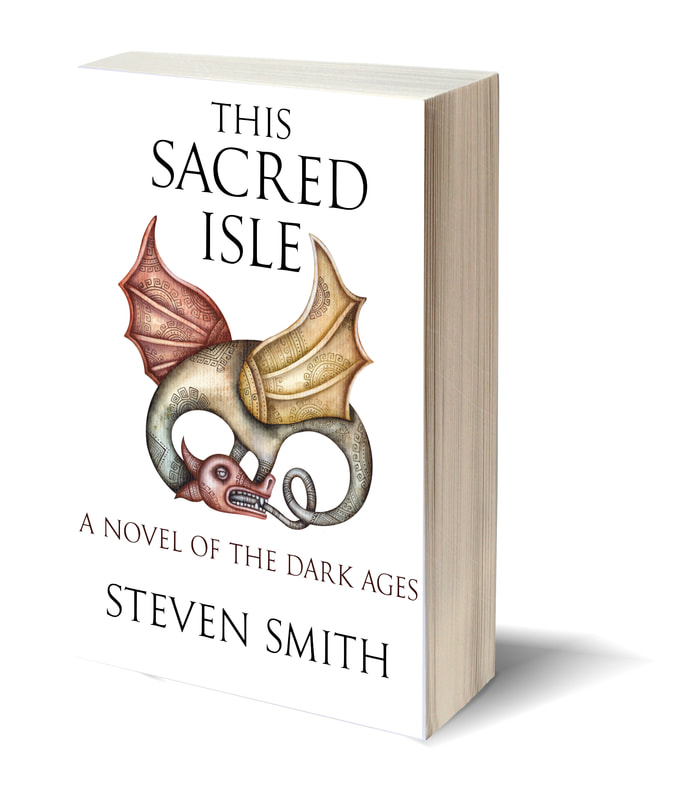
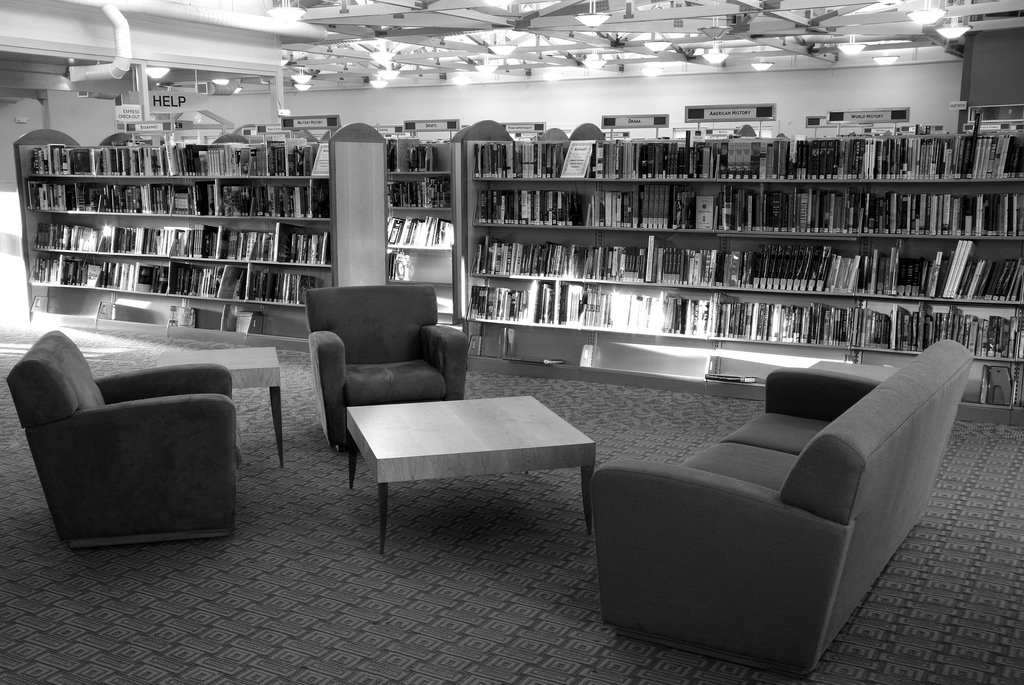
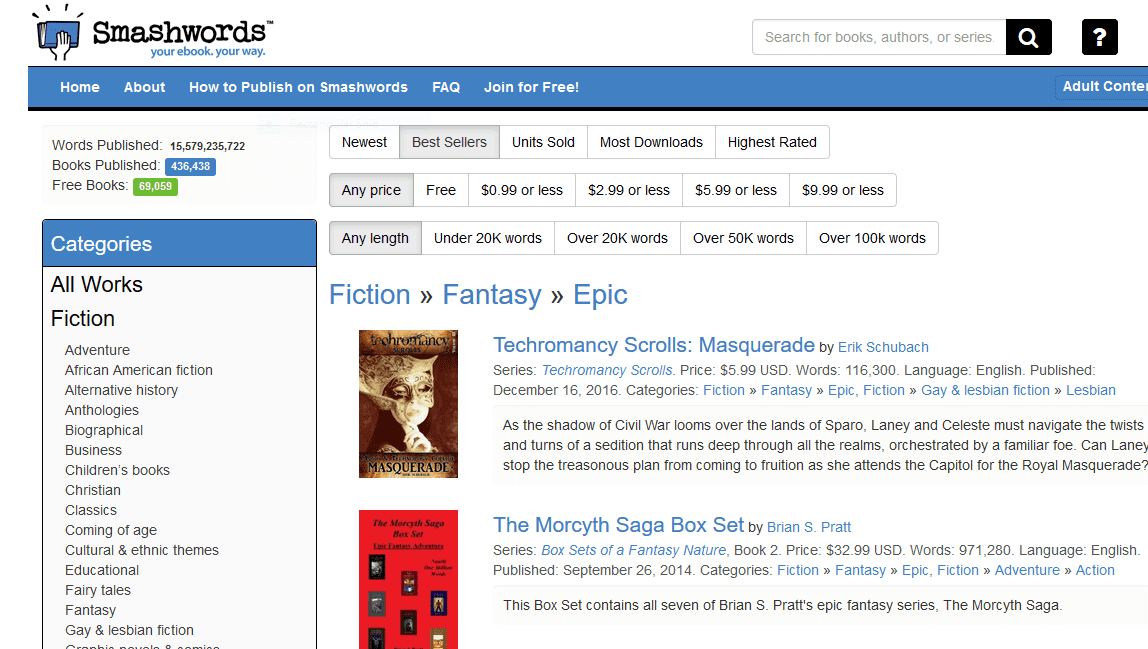
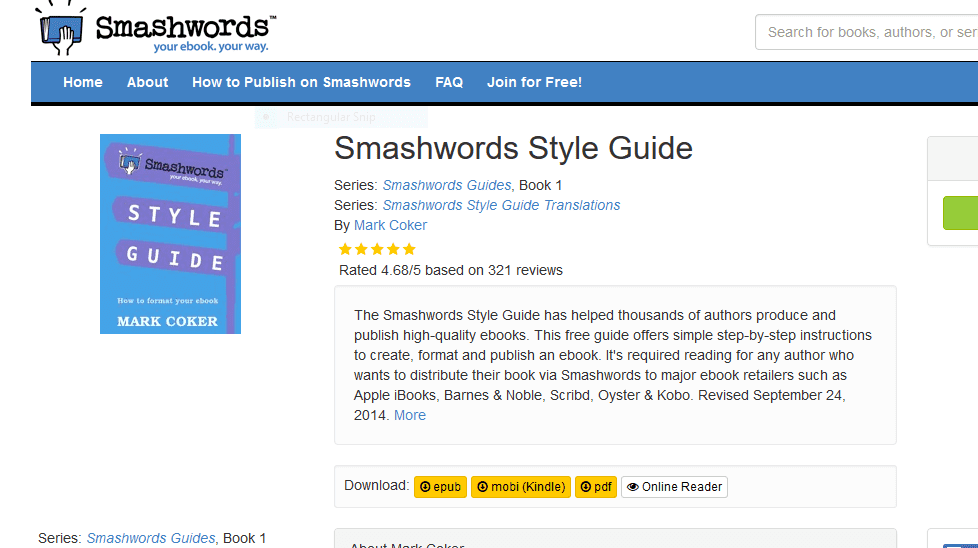
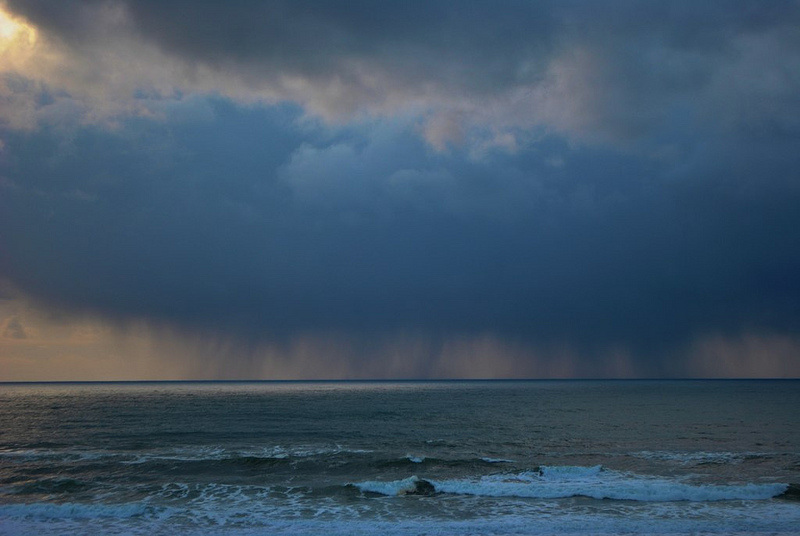
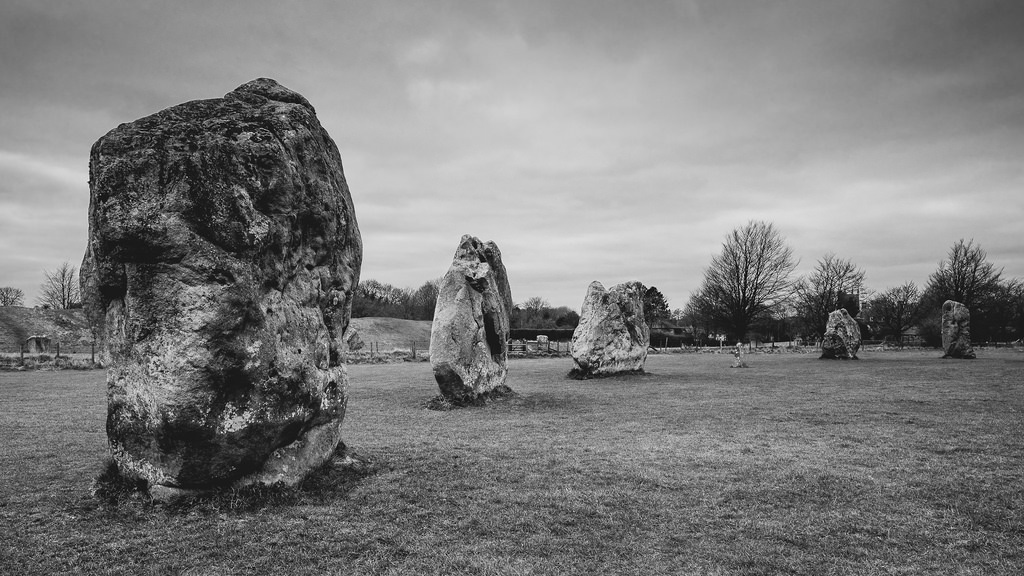


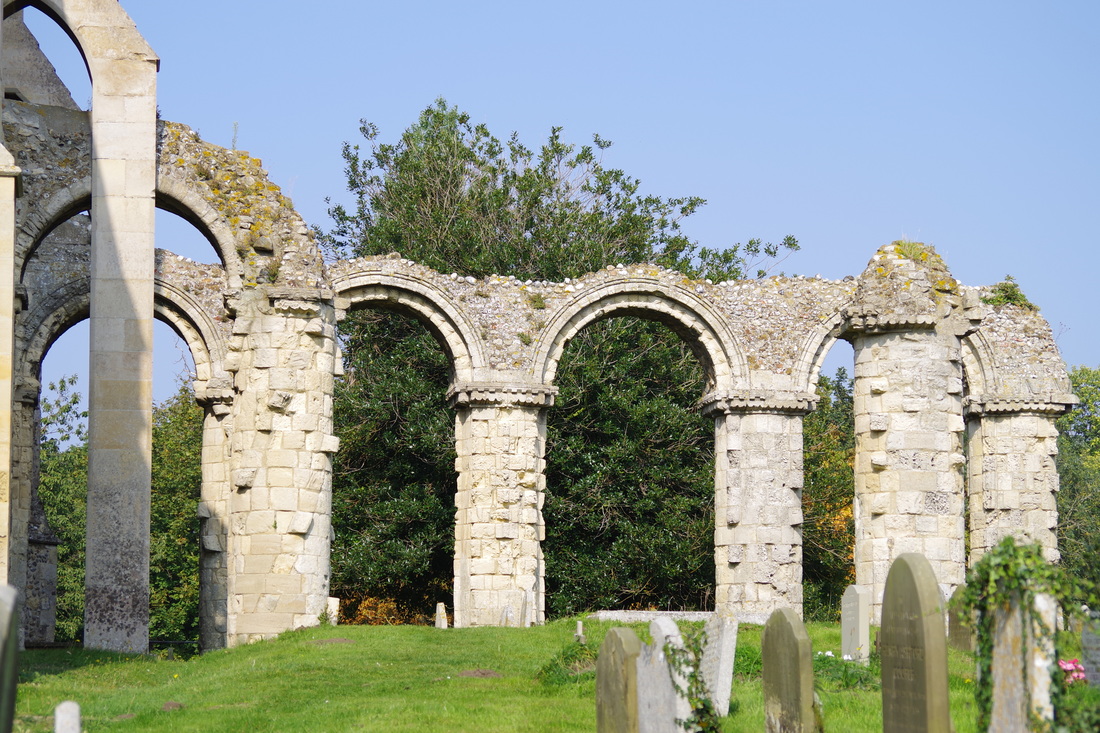
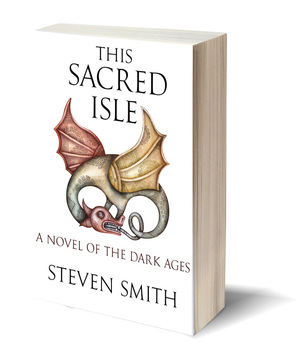
 RSS Feed
RSS Feed